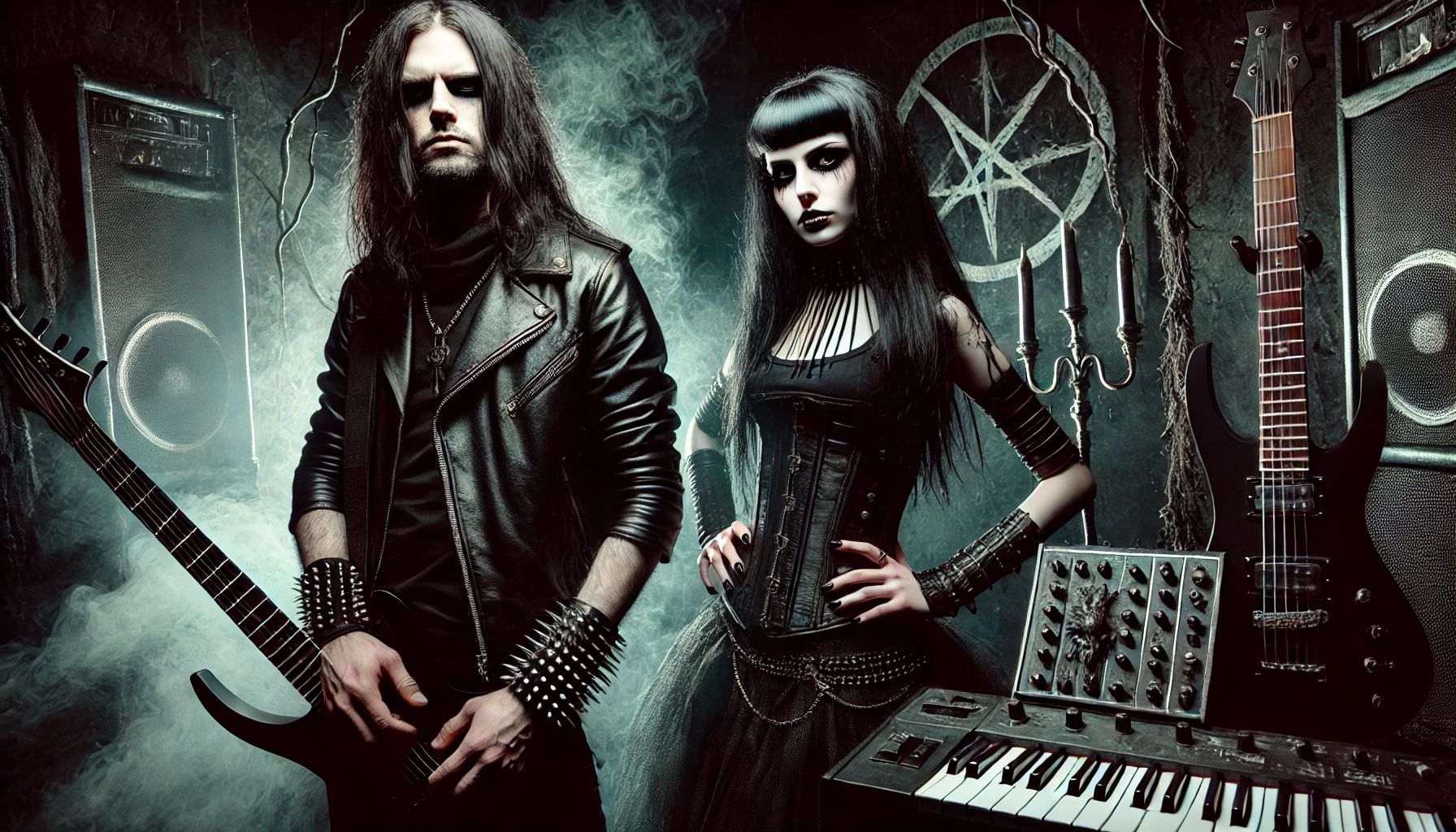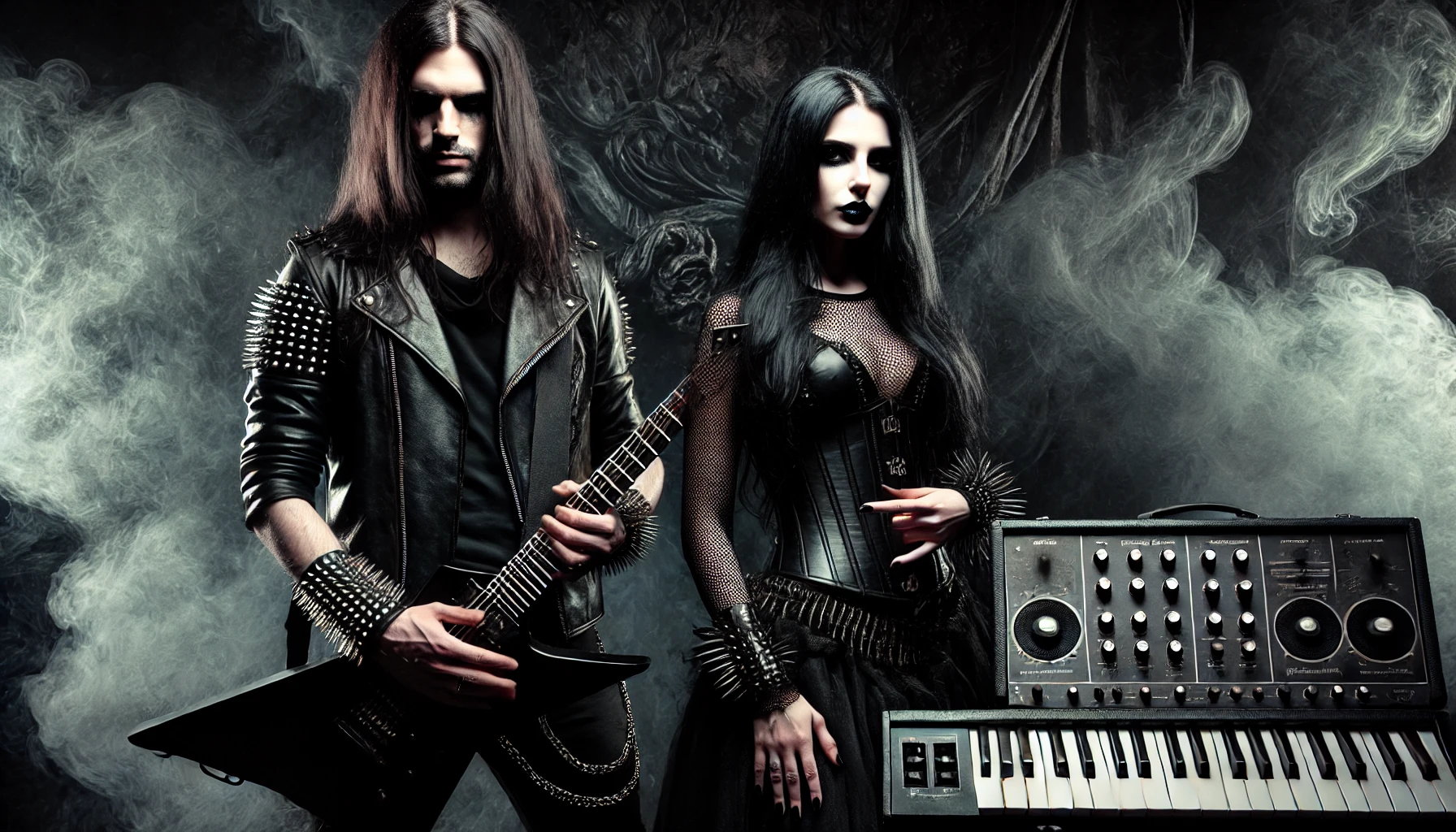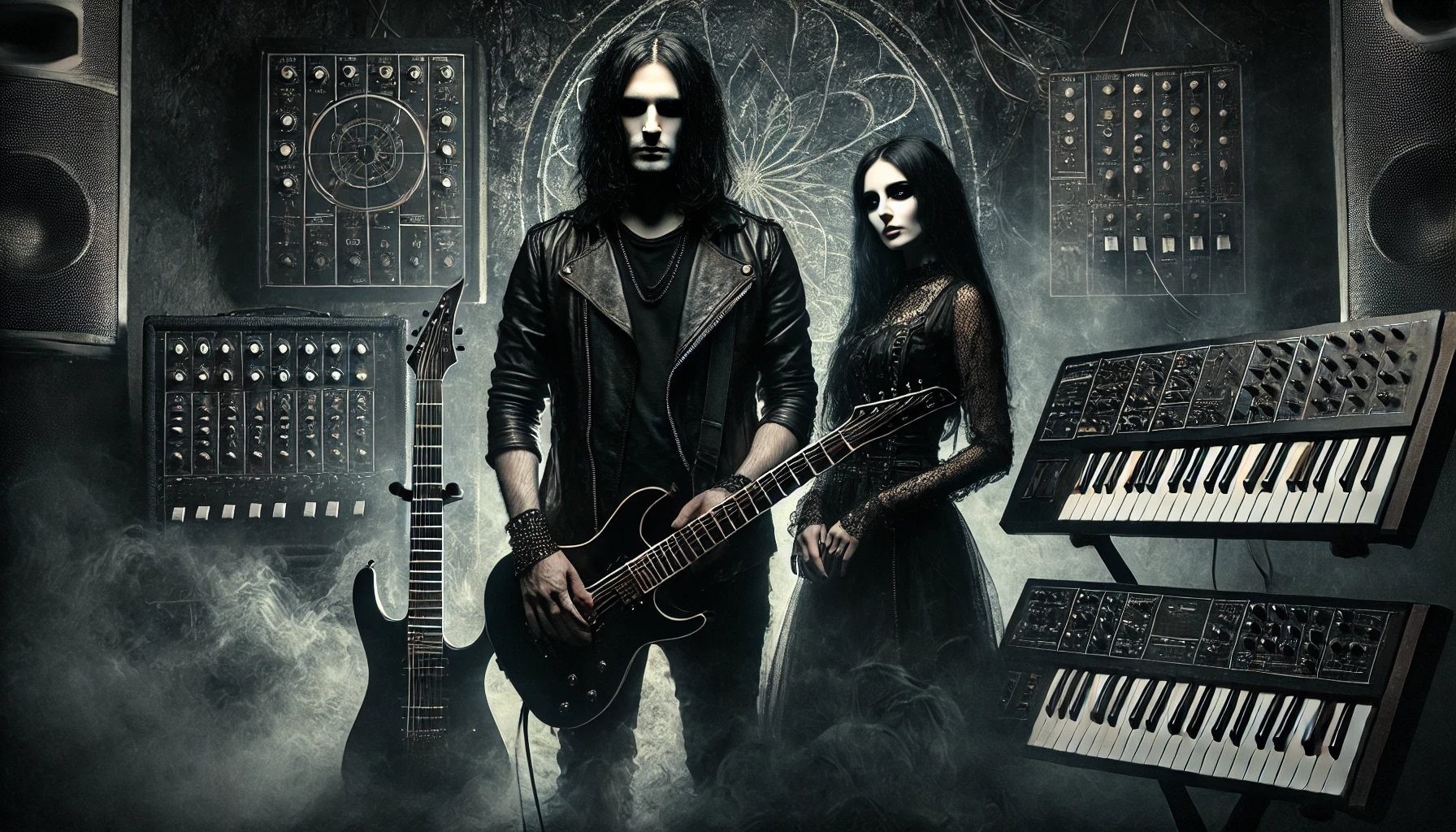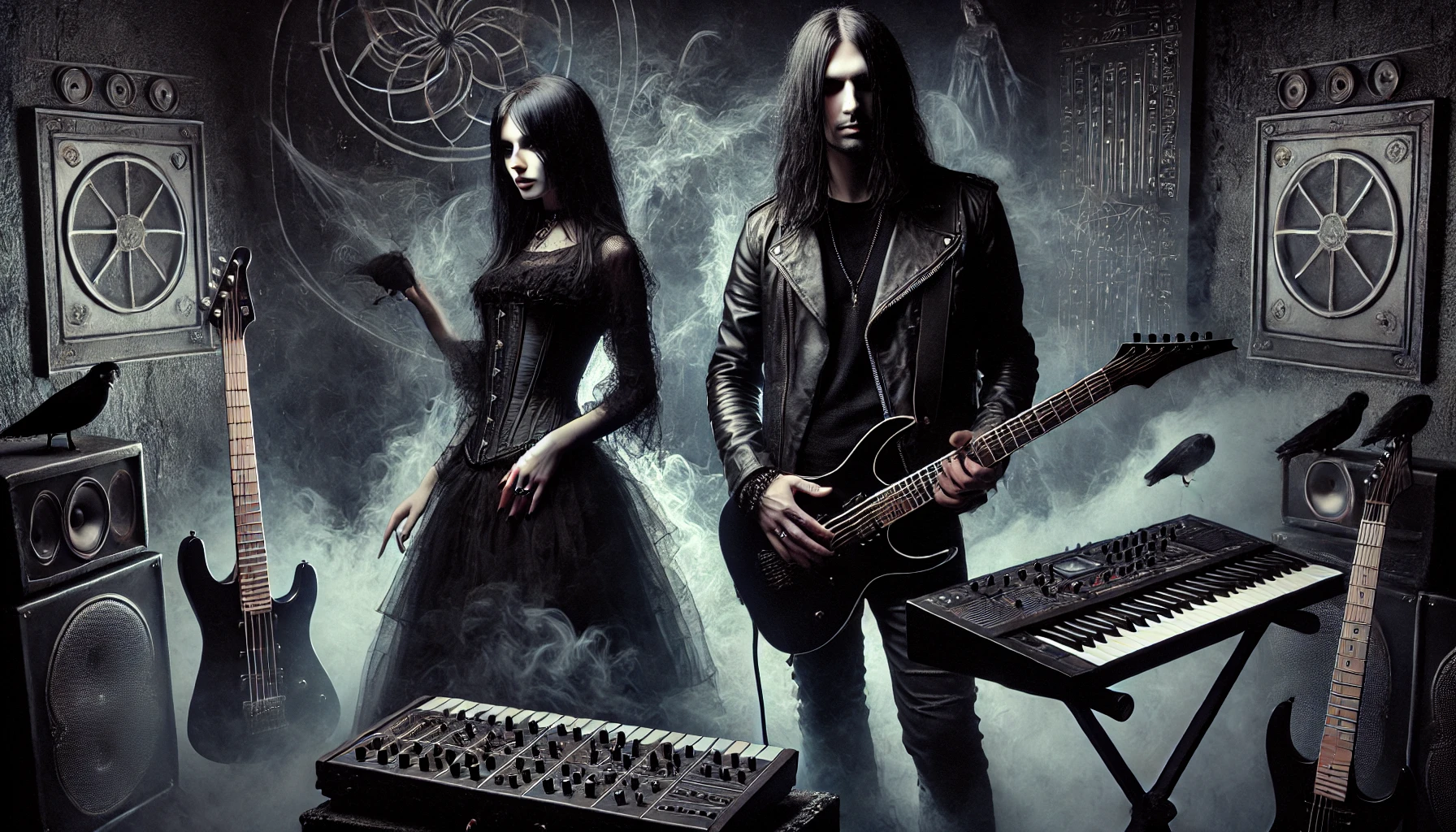The clash between traditionalism and innovation is as old as metal itself. It’s a genre built on rebellion, yet somehow, the most rebellious seem to cling to their traditions with white-knuckled fervor. The mere mention of synthesizers in metal can make the average purist recoil in horror, as if you’ve just suggested a vegan burger at a barbecue. But here’s the uncomfortable truth: synths belong in metal. Not only can they belong, but they can also thrive, adding layers of atmosphere, depth, and complexity that can elevate the music to new heights.

The Purist Perspective: A Dying Breed
Let’s start with the purists, those stalwart defenders of the “true” metal sound. They’re the ones who believe that the genre should remain untouched by anything that doesn’t involve distorted guitars, thunderous drums, and growled vocals. To them, the introduction of synths is akin to heresy, a betrayal of the genre’s roots.
But let’s be brutally honest—this purist perspective is a dying breed. The world evolves, and so must the music. The same purists who scorn synths would have been the ones scoffing at electric guitars if they’d been around when they first appeared. Metal has always been about pushing boundaries, about challenging the norm. So why should it stop now? Why should it be confined to the same old formula, repeating the same riffs and the same themes, when there’s a whole world of sonic possibilities out there?

The Role of Atmosphere in Metal
Metal isn’t just about being loud and aggressive; it’s about creating an atmosphere. The best metal tracks are the ones that transport you to another world, whether it’s the frostbitten landscapes of black metal or the apocalyptic visions of death metal. Synths, with their vast array of sounds and textures, are perfect for creating these atmospheres.
Take black metal, for instance. It’s a genre that’s built on atmosphere. The cold, harsh soundscapes of bands like Burzum and Darkthrone are designed to make you feel the chill of a Norwegian winter. Now, imagine adding a layer of icy synths to that mix. It would only enhance the effect, deepening the sense of desolation and isolation that the music evokes. Synths can create an otherworldly atmosphere that guitars alone simply can’t match.

Dimmu Borgir: Masters of the Synth-Infused Soundscape
When we talk about synths in metal, we have to talk about Dimmu Borgir. These Norwegian black metal legends have been incorporating synths into their music for decades, and they’ve done it with such skill and precision that it’s hard to imagine their sound without them.
Dimmu Borgir’s use of synths isn’t just about adding a few keyboard lines here and there. They create full orchestral soundscapes, using synths to build vast, cinematic backdrops for their music. Tracks like “Progenies of the Great Apocalypse” and “Kings of the Carnival Creation” are perfect examples of how synths can be used to create a grand, epic atmosphere in metal.
The synths in Dimmu Borgir’s music aren’t just an addition; they’re an integral part of the sound. They add layers of complexity and depth that make the music richer and more immersive. Without them, Dimmu Borgir’s music wouldn’t have the same impact. It would be just another black metal band, lost in the sea of corpse paint and tremolo picking.

Children of Bodom: The Power of Melodic Synth Lines
While Dimmu Borgir uses synths to create epic soundscapes, Children of Bodom shows how synths can be used in a completely different way. In their music, synths take on a more melodic role, often doubling the guitar lines or creating counter-melodies that add to the intensity of the music.
Take a track like “Needled 24/7.” The synth line in that song is just as important as the guitar riff. It adds a layer of melody that makes the song more dynamic, more engaging. Without the synth, the song would lose a significant part of its character. The synth isn’t just a background instrument; it’s front and center, driving the song forward.
Children of Bodom’s use of synths also adds a certain playfulness to their music. It’s fast, it’s aggressive, but it’s also fun. The synths add a layer of complexity to the music, making it more than just straightforward melodic death metal. It’s a sound that’s uniquely theirs, and the synths are a big part of what makes it so distinctive.

The Evolution of Metal: Embracing the Future
Metal has always been a genre that evolves. It started with Black Sabbath’s bluesy doom riffs, but it didn’t stop there. It grew, it changed, it incorporated elements from punk, from classical music, from jazz, and yes, from electronic music. The introduction of synths into metal is just the next step in that evolution.
We’ve seen it before with bands like Ministry and Nine Inch Nails, who brought industrial elements into metal and created something entirely new. We’ve seen it with bands like Amorphis and Tiamat, who used synths to add a gothic, atmospheric edge to their music. The result is a richer, more diverse genre, one that continues to push the boundaries of what metal can be.
The idea that metal should remain stuck in the past is ridiculous. It’s a genre that thrives on innovation, on breaking the rules and challenging the norm. If we limit metal to what it was in the 80s or 90s, we’re just killing it slowly. The future of metal is about embracing new ideas, new sounds, and new technologies, and that includes synthesizers. So Synths Can Belong in Metal.

Synths Aren’t a Gimmick; They’re a Tool
One of the biggest arguments against synths in metal is that they’re just a gimmick, something that bands use to try and stand out. But that’s missing the point entirely. Synths aren’t a gimmick; they’re a tool. They’re a way to add depth, atmosphere, and complexity to the music.
When used correctly, synths can enhance a metal track in ways that guitars alone simply can’t. They can create textures, build atmospheres, and add layers of sound that make the music more immersive. They can make a song feel bigger, more epic, more intense. And isn’t that what metal is all about?
Synths don’t dilute the heaviness of metal; they enhance it. They make the music more dynamic, more engaging. They’re a way to push the boundaries of the genre, to create something new and exciting.

Conclusion, Synths Can Belong in Metal: The Future Is Now
Synths belong in metal, not as a novelty, but as a vital part of the genre’s evolution. Bands like Dimmu Borgir and Children of Bodom have shown us what’s possible when we embrace the future instead of clinging to the past. They’ve used synths to create music that’s richer, more complex, and more powerful than anything that could be achieved with just guitars and drums.
The purists might scoff, but they’re living in the past. The future of metal is about innovation, about pushing boundaries and challenging the norm. And synths are a big part of that future. So let’s embrace them, use them to their full potential, and create the next chapter in the story of metal.
If you’re ready to dive deeper into the abyss of metal and explore more brutally honest takes, check out the home page for all things dark and twisted. And for those who want to keep up with my latest thoughts and rants across social media, hit up all my links here.
Embrace the future, and let the synths reign.




